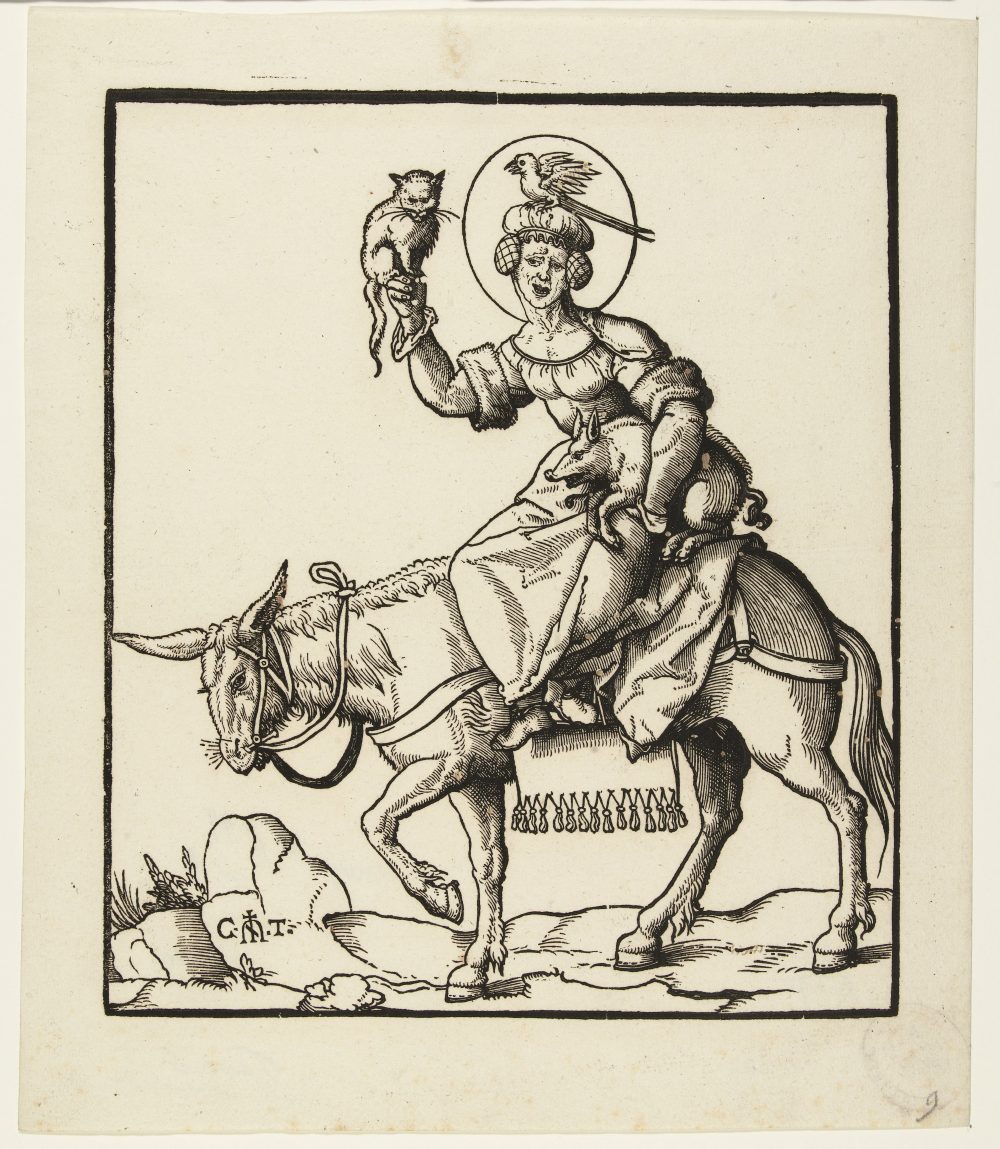
Rijksmuseum, Amsterdam, http://hdl.handle.net/10934/RM0001.COLLECT.37321
Molanus discusses the story of Zechariah who saw sin in the guise of a woman, because women give rise to the greatest vices through voluptuousness, therefore he concludes that it is correct to depict the ungodly as a woman.
“Zechariah the prophet saw the ungodly, that is, the sinner, in the guise of a woman, and he saw the angel cast a leaden mace over her mouth. Nicetas, a commentator on Gregory of Nazianzus, remarks in this passage that Zechariah saw sin in the guise of a woman, because a woman gives rise to the greatest vices through voluptuousness, and that ‘lead sealed the mouth of iniquity, because sin weighs down like heavy lead, and it is written, that all iniquity will obstruct its own mouth.’ Chrysostom speaks briefly of the painting of sin: ‘If someone, he says, were to portray sin, in my opinion, he would not be mistaken in painting it in the guise of a woman, resembling a beast, barbaric, fire-breathing, horrible, black, such as the foreign poets portray Scylla. She assaults our thoughts with hands without number and assaults those who are not careful, she lacerates everything in the manner of dogs biting in treachery.'”
“Zacharias vero propheta vidit impietatem sive peccatum sub specie mulieris et angelum mittentem massam plumbeam in os eius. Quem locum tractans Nicetas commentaor Gregorii Nazianzeni, annotat peccatum sub mulieris forma vidisse Zachariam, quia è voluptate maxima vitia ex parte nascuntur: ‘plumbum ori iniquitatis insidisse, quia peccatum aggravat instar gravissimi plumbi et quia scriptum est, omnis iniquitas oppilabit suum.’ Tractat etiam Chrysostomus nonnihil de peccati pictura. ‘Quod si quis’, inquit, ‘peccatum effingeret, non sane migi videretur errare si in hunc modum id pingeret, foeminam quandam in ferae similitudinem, barbaram, ignem afflantem, horrendam, nigram, quales exerni poetae Scyllas effingunt. Innumeris enim manibus nostri insidiatur cogitationibus et in opinantes aggreditur, omnia dilacerat more canum olanculum mordentium.'”
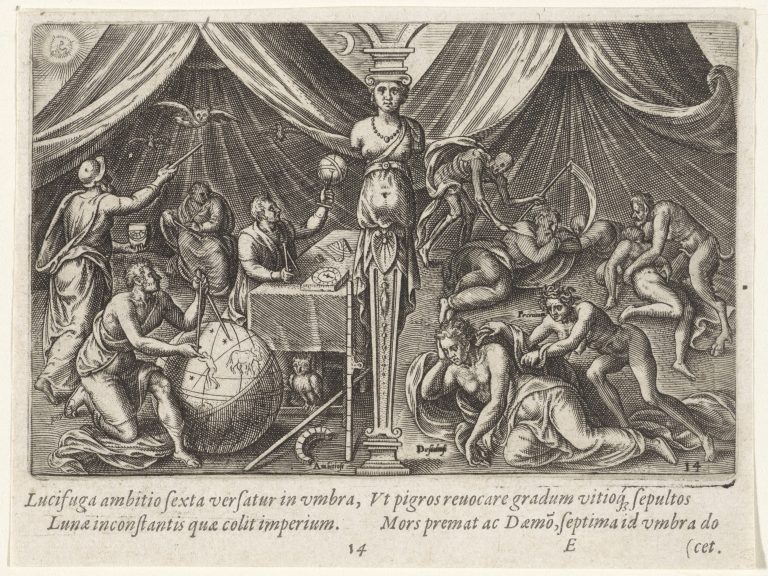
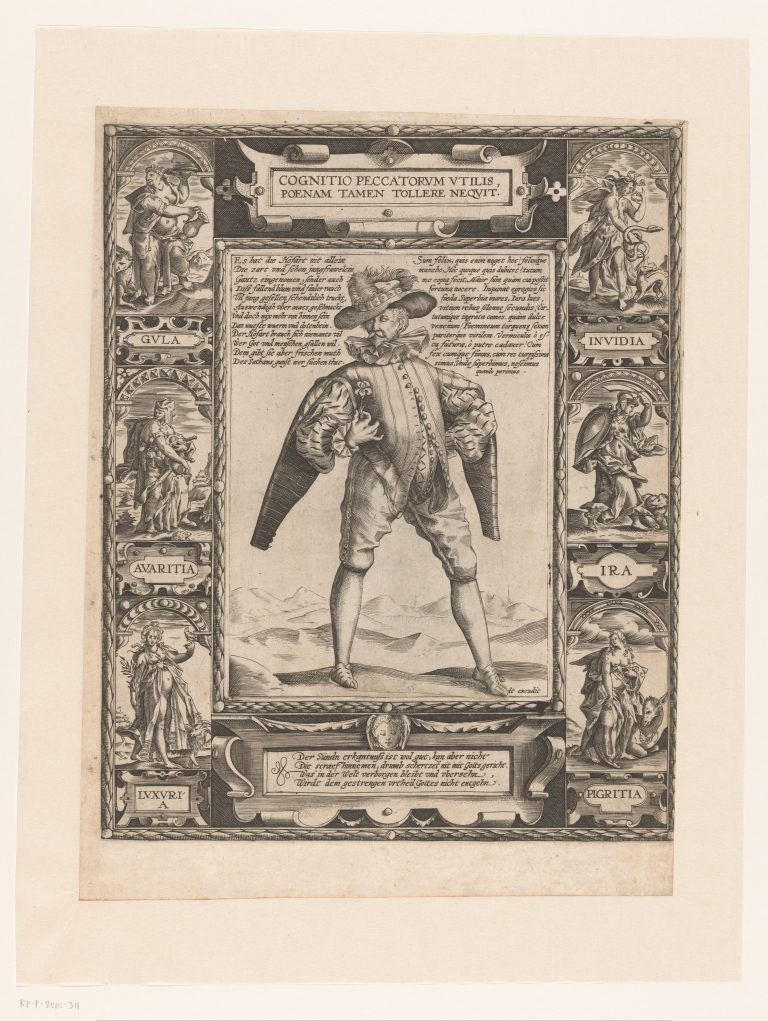
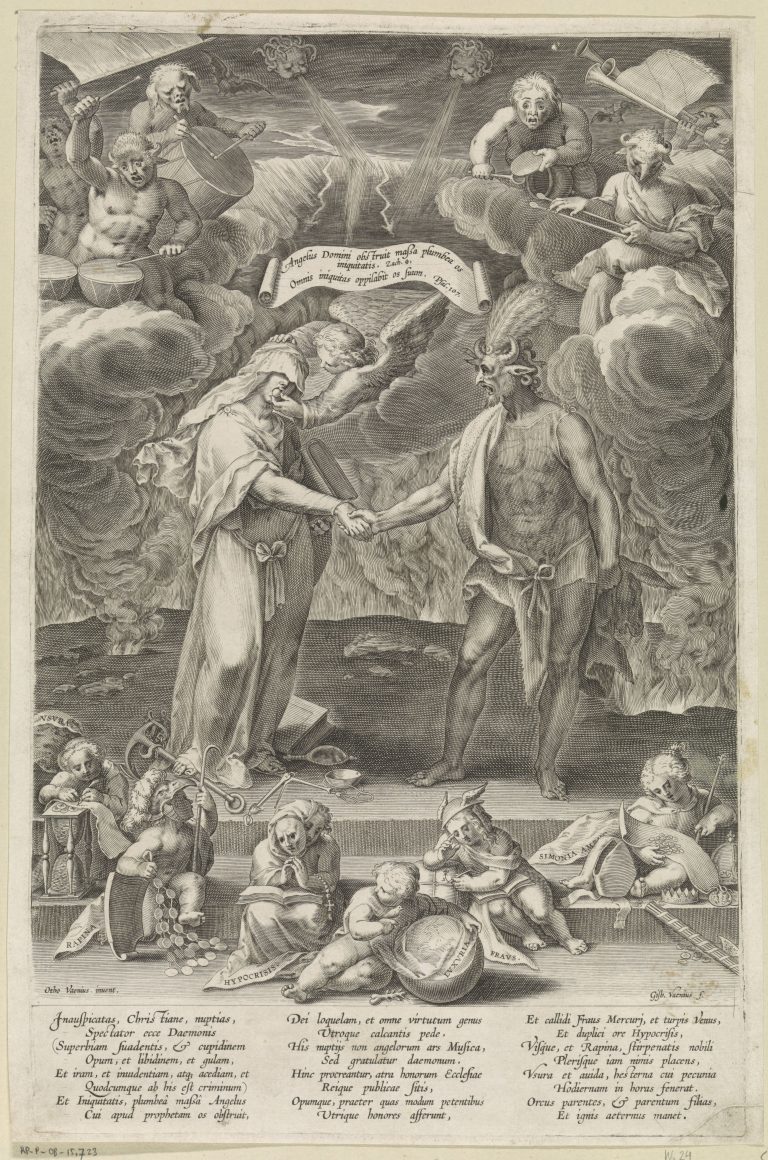
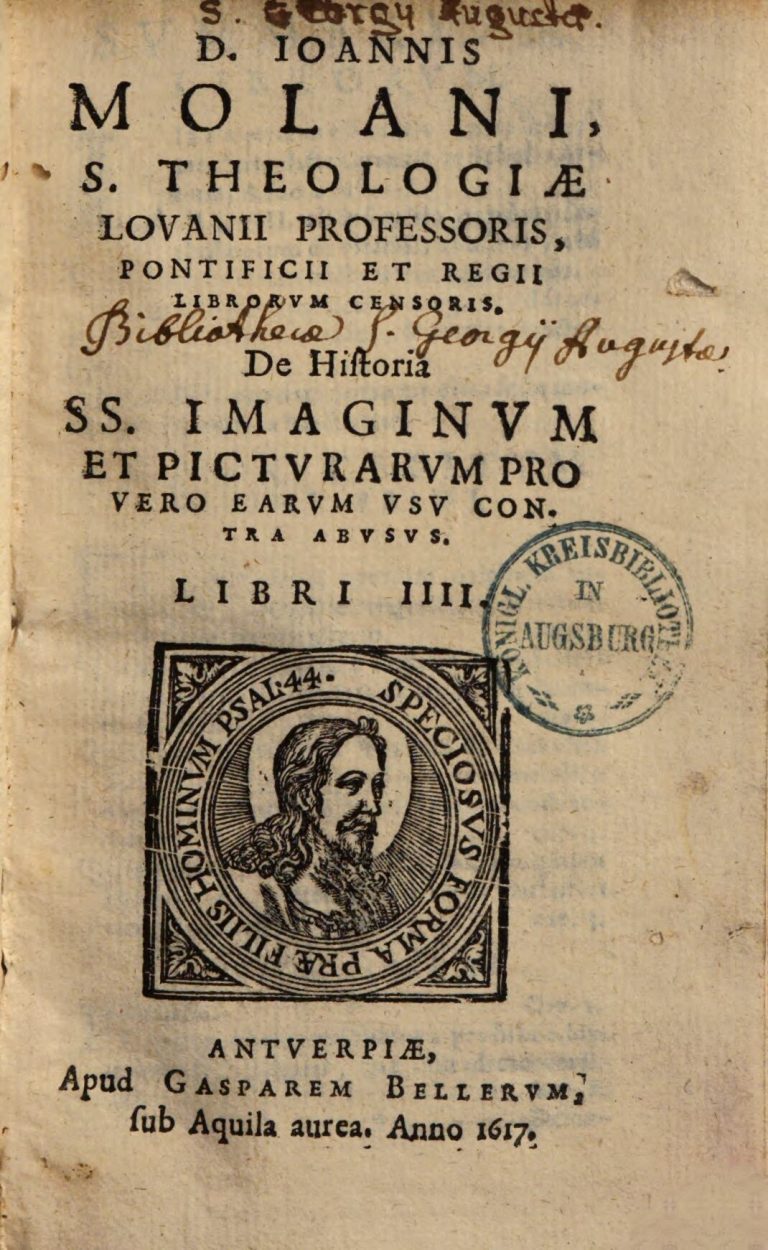
Molanus 1996, 268-269.



